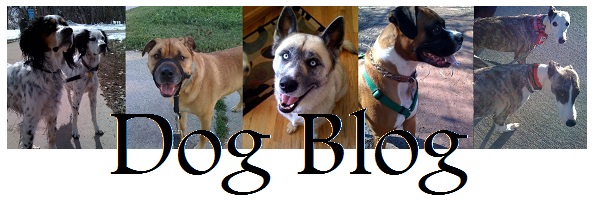My days have often been filled shushing the barking dogs, putting my hands up or turning away from the dogs jumping on me at every turn, and the overly-excited dogs...woof. In a pack setting hyperactive dogs can cause problems, like someone yelling, "Fire!" in a movie theater. I was often frustrated chasing the dogs' bad behaviors all day.
So operation Catch 'em doin' something good and Ignore 'em when they're bad--started. In psychology mumbo-jumbo they call this: positive reinforcement and negative punishment.*
I started with the "barkers." I would catch them when they weren't barking, say their name, walk over and give them praise and pets (positive reinforcement). If they started barking because of the excitement of being petted, I'd simply turn and walk away (negative punishment). This is big in dog world where the pack is everything.
If the dog walked up to me barking for attention, I'd turn and walk away. The only way I would give them attention was when I found them being quiet and calm--and I actively sought them out. If they barked I never looked at them or corrected their behavior, I just did an about face and walked away.
After only 15 minutes I noticed a marked difference. After an hour--practically cured barkers! No barking at me for attention. A decrease in barking overall. Since barking tends to be a mirrored behavior*, the entire pack was more quiet.
I worked with the "jumpers." These dogs LOVED the negative attention they were getting, all the, "No Dewy! Off Dewy!" and the touches and pushes were just more reward. I would call them to me. As usual they would jump on me, so I would turn and walk away.
The jumpers stopped jumping and calmed down. Some took longer than others. They had practiced this jumping behavior for a loooong time and getting attention for being calm was a new behavior to practice.
I'm sure you're getting the idea now...I did the same thing for the hyperactive dogs, searching them out when they were calm--which was tough to find them when they were calm and praise them without their getting worked back into a frenzy. But it worked.
The best part came at the end of the day when an owner came to pick up her dog and usually the dogs bark at the fence line as their dog friend leaves. Instead they stood there silently.
"Wow, they're so quiet," the owner said. The energy of the entire pack was calmer. I was calmer. It was achieved by merely actively praising what behavior you want and ignoring the behavior you don't want.
Catch your dog doing something good today!
Suggested readings*:
Your Dog is Your Mirror--Kevin Behan
The Well-Adjusted Dog--Dr. Nicholas H. Dodman


